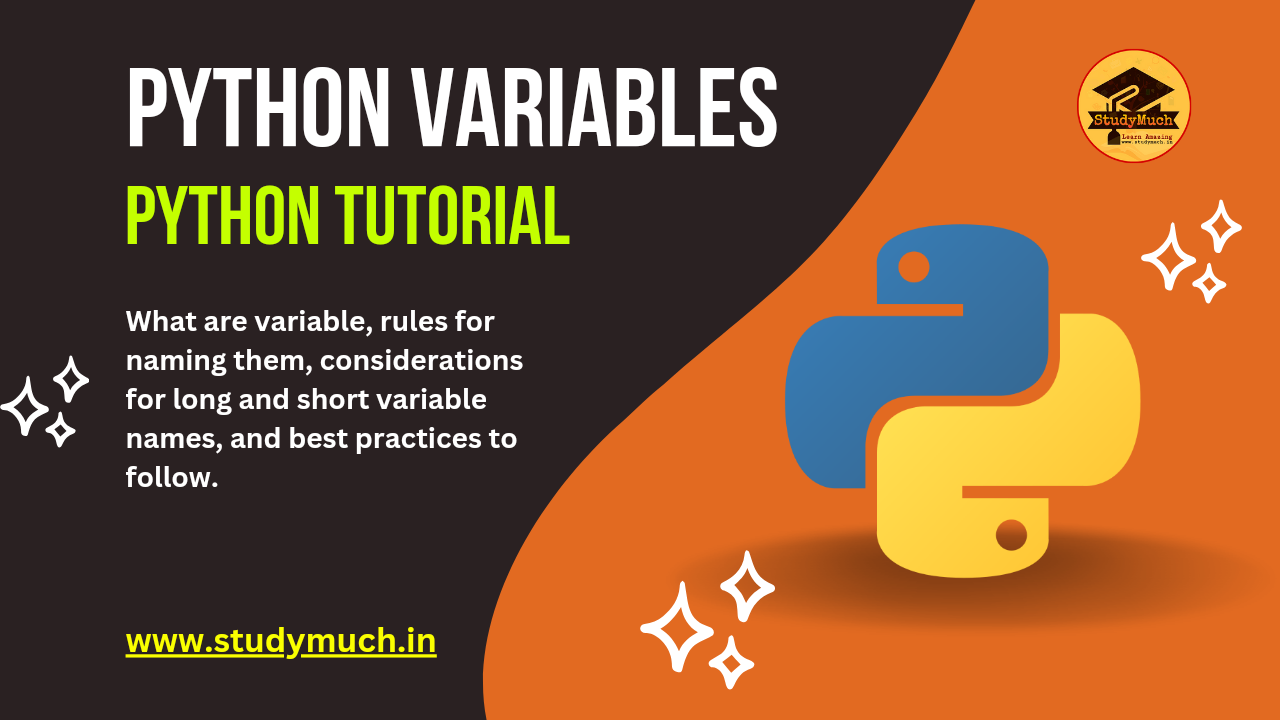Python Variables

Python Variables: Naming, Types, and Best Practices
Python, with its simplicity and versatility, has become one of the most popular programming languages for both beginners and experienced developers. Central to Python’s power is its use of variables, which allow you to store, manipulate, and manage data effectively. In this blog post, we’ll delve into the world of Python variables, exploring what are variable, rules for naming them, considerations for long and short variable names, and best practices to follow.
What is a Variable in Python?
Variable in Python is a symbolic name that represents a value or an object stored in memory. Think of variables as containers that hold data, making it easier to work with and manage complex information in your programs. To create a variable, use equal sign (=).

Variable Example;
Certainly! Here’s a simple programming example that demonstrates the use of Python variables to perform basic calculations:
# Calculate the area of a rectangle using variables # length and bredth is variable name length = 45 width = 5 area = length * width # Display the result print ("The area of rectangle is: ", area)
In this example, we define two variables, length and width, and assign them the values 5.0 and 3.0 respectively. We create another variable named area and assign it the result of the multiplication length * width. We use the print function to display the calculated area.
Rules for Naming Variables;
To create meaningful and maintainable code, it’s crucial to adhere to naming conventions for variables. Here are the essential rules to keep in mind:
- A variable name should start with a letter or underscore (_).
- Variable names must begin with a letter (a-z, A-Z) or an underscore (_). They cannot start with a digit or any other character.
- A variable name cannot start with a number.
- A variable name is case-sensitive.
- A variable name should only contain underscore (_) and alpha-numeric character.
- You cannot use Python’s reserved keywords (e.g., if, while, for, import, etc.) as variable names.
- Choose descriptive and meaningful variable names that reflect the purpose or content of the data they store.
Here are some examples of legal variable names;
# Valid variable names age = 25 name = "Alice" height_in_meters = 1.75 total_students = 150 is_student = True average_score = 85.5
Best Practices for Variable Usage
To write clean and maintainable code, consider the following best practices when working with variables:
- Use Clear and Intuitive Names: Opt for variable names that convey their purpose or content. This makes your code self-explanatory and reduces the need for excessive comments.
- Follow Naming Conventions: Adhere to the recommended naming conventions, such as using lowercase letters for variable names and underscores to separate words.
- Avoid Magic Numbers: Instead of using constants or literal values directly in your code, assign them to variables with meaningful names. This enhances code readability and maintainability.
- Stay Consistent: Maintain consistency in your variable naming style throughout your codebase. Consistency makes it easier for you and others to understand and modify the code.
- Update Names as Needed: If the purpose of a variable changes or evolves, don’t hesitate to update its name to reflect the new role it plays.
- Use Comments Sparingly: While descriptive variable names are preferred, judicious use of comments can provide additional context when necessary.
Conclusion
Python variables serve as the backbone of data manipulation and storage in your programs. By adhering to naming conventions, embracing both long and short variable names where appropriate, and following best practices, you can create code that is not only functional but also highly readable and maintainable. The power of Python lies not only in its syntax but also in the way you leverage variables to express the logic and meaning behind your code.
Learn Also;



1 Comment
tlover tonet · June 30, 2024 at 8:47 pm
You made some decent points there. I looked on the internet for the issue and found most guys will go along with with your site.